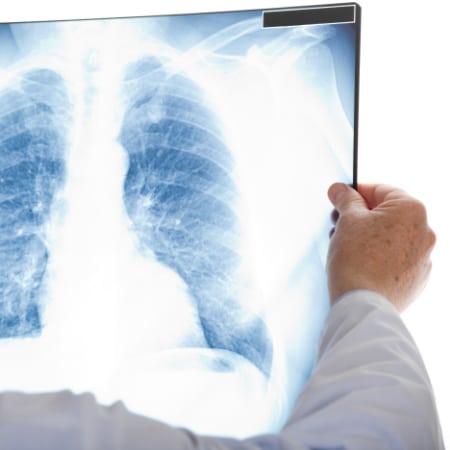Early Detection, Better Outcomes
Lung Cancer Screening
Lung cancer (both small and non-small cell) is the second most common cancer in both men and women in the United States. The American Cancer Society’s estimates that in 2025, there will be about 226,650 new cases of lung cancer (110,680 in men and 115,970 in women) in the United States. Among these cases, it is also estimated that there will be about 124,730 deaths from lung cancer in 2025.
This disease is by far the leading cause of cancer death in the United States, accounting for about 1 in 5 of all cancer deaths. Each year, more people die of lung cancer than of colon, breast, and prostate cancers combined.
A test known as a low-dose CT (LDCT) scan is used to screen people at higher risk (mainly because they smoke or used to smoke) for lung cancer. LDCT scans can help find abnormal areas in the lungs that may be cancer. Research has shown that yearly LDCT scans to screen people at higher risk of lung cancer can save lives.
Lung cancer screening is the key to early detection and the best defense against lung cancer.

Lifesaving Screenings for All
When lung cancer is found at an earlier stage, when it is small and before it has spread, it is more likely to be treated successfully. Lung cancer screening is recommended for certain people who smoke or used to smoke, but who don’t have any signs or symptoms.
Patients that may be eligible for lung cancer screening should meet the following criteria:
- Age 50 – 80 years of age
Asymptomatic (no signs or symptoms of lung cancer). - Tobacco smoking history of at least 20 pack-years (one pack-year = smoking one pack per day for one year; 1 pack = 20 cigarettes).
- Current smoker or one who has quit smoking within the last 15 years.
- Receive an order for lung cancer screening with LDCT.
You may be referred to Horizons by your primary care provider. When you connect with Horizons, you’ll be paired with a Patient Navigator who will work one-on-one with you to:
- Help you obtain a low/no-cost screening from one of our healthcare partner providers or hospitals.
- Connect you with follow-up care if your screening uncovers something requiring additional attention.
- Provide you with accurate and reliable information through every step of the process.
- Assist you with transportation to and from treatment if your situation requires it.
Lung Cancer Facts
The information below comes from The American Cancer Society.
- Lung cancer develops silently, with few or no symptoms in its early stages. When caught early through screening, it is more likely to be treated successfully.
- Overall, the chance that a man will develop lung cancer in his lifetime is about 1 in 17; for a woman, the risk is about 1 in 18. These numbers include both people who smoke and those who don’t smoke. For people who smoke, the risk is much higher, while for those who don’t, the risk is lower.
- Black men are about 12% more likely to develop lung cancer than White men. The rate is about 16% lower in Black women than in White women.
- Black and White women have lower rates than men, but the gap is closing. The lung cancer rate has been dropping among men over the past few decades, but only for about the past decade in women.

Symptoms
While many times lung cancer may present with few or no symptoms, especially in earlier stages, it is important to be aware of the following symptoms that may appear:
- A persistent or worsening cough
- Chest pain or shortness of breath
- Hoarseness or coughing up blood
- Repeated lung infections
- Unexplained weight loss
You do not need to have symptoms to be screened.

